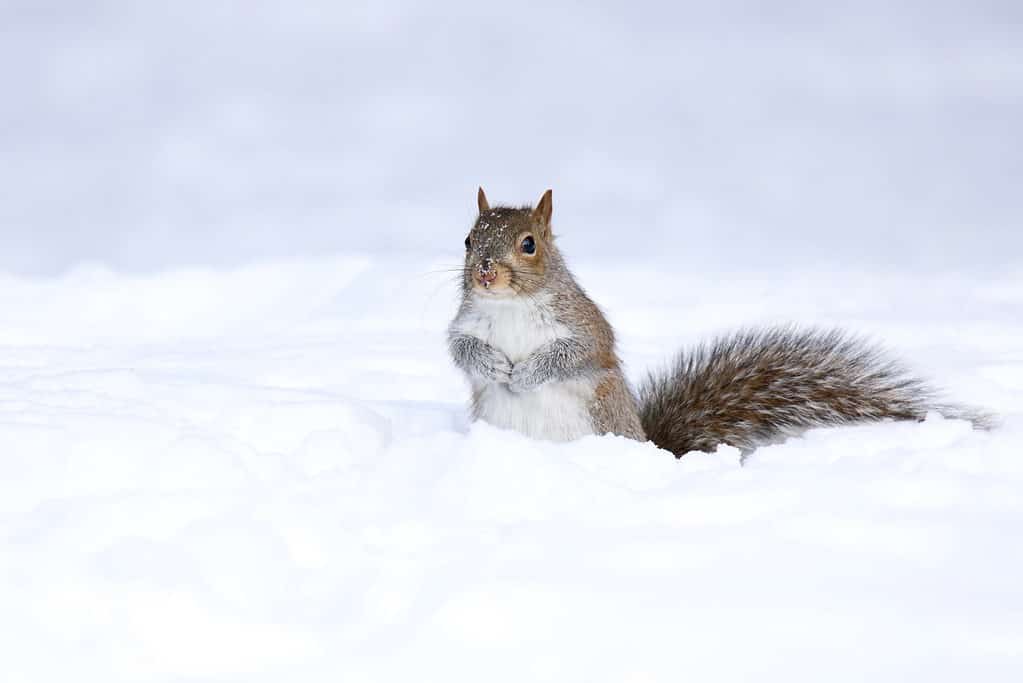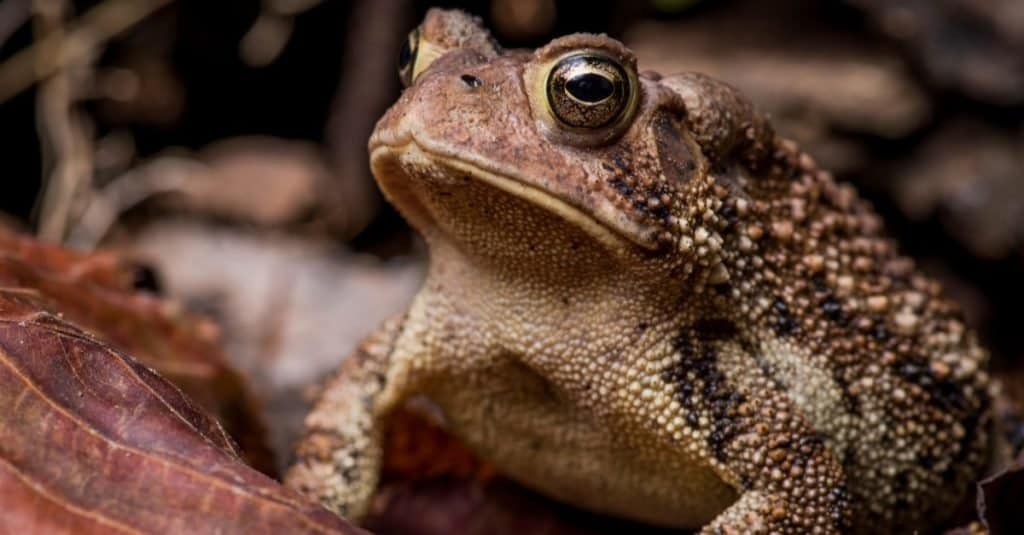A typical winter in Georgia is mild, with temperatures ranging from the low 20s to the mid-50s. On a cold day, you may experience highs in the 40s and lows in the teens. In the mountainous regions of Georgia, the typical winter temperature is 39°F.
It is uncommon for snow to fall during this time of year. If it does, it rarely accumulates more than an inch. Winter storms can bring ice and freezing rain to the northern parts of the state, which can cause hazardous driving conditions on roads and bridges. In extreme cases, such as when temperatures drop below freezing, icy winds will make outdoor activities unbearable. Residents can’t venture outside without proper protection from harsh wind chills. But for the most part, Georgia has a sub-tropical climate.
The Lowest Temperature Ever Recorded (-17°!)
The temperature in Georgia dropped to an astonishing low of -17°F on January 27, 1940. This temperature was recorded both in Chatsworth, Murray County, and at a weather station in Floyd County, both of which are usually about 40° warmer than the record-breaking temperature.
On that same day, Atlanta was 5°F, and Chatanooga was -3°F. These unusual temperatures were brought about by cold weather pockets and artic air passing by the area.
Why Is This Part of Georgia So Cold?
In Georgia, the coldest temperature ever documented was in the northwest area, referred to as “The Pocket.” Frigid air, tranquil conditions, and newly fallen snow combined to create the coldest temperature ever seen. The weather station is in a low-lying area near northern Floyd County. It was recorded at CCC camp 17.
Fresh snow covered the valley floor and refrigerated the air. The snow came from a winter storm and crossed with an arctic air mass. The combination of unique geography, colder air mass, and calm, icy surface conditions was the perfect mixture to create these record-setting low temperatures.
Does it Snow in Georgia?

In areas that are higher than 3,500 feet, such as along the Appalachian Trail, snowfall is typical during the winter season.
©iStock.com/trekandshoot
Georgia’s mountain regions experience the chilliest weather and the most snowfall in the state. However, it’s not comparable to other parts of the Appalachian Mountains. Nonetheless, certain counties have an average of 4-18 inches of snow per year. When the elevation is over 4000 feet, winters can be particularly harsh. Some storms deposit more than a foot of snow.
In areas that are higher than 3,500 feet, such as along the Appalachian Trail, snowfall is typical during the winter season. An average of 10-25 inches is common. Mount Brasstown Bald, the highest peak in the state at 4,784 feet, receives an average of 40 inches of snow annually. When there is at least a 50 percent chance of more than 2 inches of snow falling in a 12-hour span, a warning is issued. In extreme northern counties, a warning is issued if more than 7 inches of snow are predicted in a 24-hour period.
Wild Animals That Live in This Part of Georgia
There are a variety of wild animals living in Floyd County and Murray County, Georgia. These animals have adapted to the cold temperatures due to the region’s location in the Appalachian Mountains. The area is home to more than 250 species of birds. Georgia is rich in amphibians, too, with 80 different species!
White-tailed Deer
White-tailed deer are incredibly adaptable animals, and they have evolved to survive the cold winters in Georgia’s mountainous regions. They rely on their thick winter coats made up of hollow hairs, which provide insulation. This furry layer helps them maintain a normal body temperature when it is freezing outside. Additionally, white-tailed deer seek out evergreen trees for shelter during snowstorms or windy days. They are also smart enough to stay moving in order to remain warm on the coldest days.
Eastern Gray Squirrel

The fur around their neck is much thicker than other areas of their body, which helps insulate them.
©iStock.com/suefeldberg
Eastern gray squirrels are commonly found in the forests of Georgia and have evolved to survive the cold winter temperatures. They spend most of their time gathering food during the warmer months and storing it away for when temperatures drop. During this period, they rely heavily on stored nuts, acorns, and seeds. In addition to eating these stored foods, they will also feed on buds and bark from trees.
In frigid conditions, eastern gray squirrels huddle inside hollowed-out tree trunks or nests made from leaves and twigs. The fur around their neck is much thicker than other areas of their body, which helps insulate them. They also conserve energy by staying still for long periods of time. Using these methods, they are able to survive even the lowest recorded temperatures ever seen in Georgia!
White-Footed Mouse
White-footed mice are well adapted to survive cold winters. They have a thick fur coat that helps them retain body heat during the winter. Additionally, their short tails serve as an extra layer of insulation. Their small size allows them to take shelter in crevices or burrows near the ground where temperatures remain more stable.
White-footed mice also build nests out of grass and line them with feathers, fur, or leaves for added warmth. Finally, these rodents feed on high-calorie food items, such as seeds, nuts, fruits, insects, and bird eggs. These provide them with adequate energy reserves to stay warm.
Red-Backed Salamander
Red-backed salamanders are native to the southern Appalachian Mountains, which includes parts of Georgia. These small amphibians have adapted to survive in temperatures as low as -2°. They are well-suited for the typical winter temperatures in Georgia. In the coldest regions, these salamanders hibernate below ground in winter. In other areas, they stay warm by hiding under rocks and digging cozy burrows. When spring comes, they emerge to enjoy sunning themselves on warm rocks.
Virginia Opossum
Virginia opossums are native to Georgia. They are about the size of a housecat and weigh four to six pounds. They are very good at adapting to many environments and live in forests, cities, and towns throughout the eastern U.S.
Virginia opossums are well acclimated to the cold winter temperatures in Georgia. They have several strategies for staying warm. Their thick fur helps them retain body heat, while their long, bushy tails act as a blanket. Additionally, these creatures are very good at finding shelter from wind and rain so that they can stay dry and conserve energy. They are so unbothered by the cold that they have babies in mid-winter and carry them in a pouch until spring.
American Toad

These nocturnal creatures enjoy living in moist environments where there’s an abundance of insects for them to feed on.
©Fotoz by David G/Shutterstock.com
The American toad is a unique species of amphibian that can be found throughout many areas of North America. They are known for their distinct brown coloring and warty skin, as well as the beautiful musical calls they produce at night.
These nocturnal creatures enjoy living in moist environments where there’s an abundance of insects for them to feed on. During winter months, when temperatures drop below freeziing, the American Toad will dig underground and hibernate until spring arrives. The warmer temperatures wake them up, and they pop out of their hiding place to enjoy spring insects. American toads cannot survive if they freeze. To prevent this from happening, they bury themselves below the frost line so that their bodies remain warm.
The photo featured at the top of this post is © iStock.com/Cheryl Ramalho
Thank you for reading! Have some feedback for us? Contact the AZ Animals editorial team.






